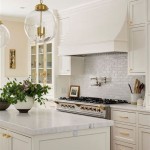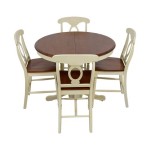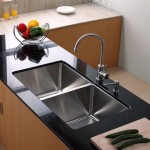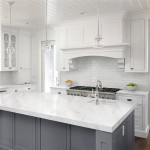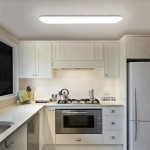Butcher Block Kitchen Table and Chairs
Butcher block kitchen tables and chairs offer a compelling combination of practicality, durability, and aesthetic appeal. Their robust construction and warm, natural look make them a popular choice for homeowners seeking a kitchen centerpiece that can withstand daily use while enhancing the overall kitchen design. This article explores the key aspects of butcher block tables and chairs, covering material considerations, style options, and care and maintenance.
Understanding Butcher Block Materials
Butcher block isn't a single type of wood but rather a construction method. It involves joining pieces of solid wood together, typically in an edge-grain or end-grain configuration. Edge-grain butcher block, where the long sides of the wood pieces are visible, offers good durability and a relatively smooth surface. End-grain butcher block, showcasing the ends of the wood pieces, is incredibly durable and resistant to cuts and scratches, making it the traditional choice for butcher shops. Common wood types used for butcher block include maple, walnut, cherry, and oak, each offering distinct color, grain patterns, and hardness.
The thickness of the butcher block is also a crucial consideration. Thicker slabs offer greater durability and a more substantial feel, while thinner options can provide a lighter, more contemporary look. Choosing the right wood type and thickness depends on the intended use and desired aesthetic.
Selecting the Right Chairs
Pairing the right chairs with a butcher block table is essential for both comfort and visual harmony. A variety of chair styles can complement the natural warmth of butcher block. Classic wooden chairs offer a cohesive and timeless look, while metal chairs can introduce a modern industrial touch. Upholstered chairs with fabric or leather seats provide added comfort and can soften the overall appearance. When choosing chairs, consider the height of the table, the overall style of the kitchen, and the desired level of comfort.
The number of chairs needed depends on the size of the table and the intended seating capacity. Bench seating can be a space-saving option, particularly for smaller kitchens. Mixing and matching chair styles can create an eclectic and personalized look, but maintaining a sense of balance and proportion is key.
Caring for Your Butcher Block Table and Chairs
Proper care and maintenance are crucial for preserving the beauty and longevity of butcher block furniture. Regular cleaning with a damp cloth and mild soap is essential. Avoid using harsh chemicals or abrasive cleaners, which can damage the wood. Periodically oiling the butcher block surface with mineral oil or a specialized butcher block oil helps to prevent drying, cracking, and staining. The frequency of oiling depends on the climate and how often the table is used.
Protecting the table from excessive heat and moisture is also important. Use coasters and placemats to prevent water rings and heat damage. Avoid placing hot pots and pans directly on the butcher block surface. For chairs, regular dusting and cleaning are generally sufficient. For upholstered chairs, follow the manufacturer's cleaning instructions for the specific fabric or leather.
Styling and Design Considerations
Butcher block tables and chairs can be incorporated into a variety of kitchen styles. In a rustic or farmhouse kitchen, they contribute to the warm and inviting atmosphere. In a modern kitchen, they can provide a natural counterpoint to sleek cabinetry and stainless steel appliances. The choice of wood type and chair style can further influence the overall aesthetic.
Consider the size and shape of the table in relation to the kitchen space. A round table can create a more intimate dining area, while a rectangular table can accommodate more people. The table’s finish can also impact the overall look. A natural finish enhances the wood’s grain and color, while a painted finish can create a bolder statement. Choosing the right styling elements, such as table runners, placemats, and centerpiece decorations, can further personalize the space.
Key Considerations for Purchasing
When purchasing a butcher block table and chairs, several factors warrant consideration. Budget is a primary concern, as butcher block furniture can range in price depending on the wood type, size, and construction. Quality is another important aspect. Look for well-constructed tables with sturdy joints and a smooth, even surface. Consider the reputation of the manufacturer or retailer and read customer reviews before making a purchase. Finally, ensure that the table and chairs are the appropriate size and scale for the kitchen space.
Choosing the right butcher block table and chairs can significantly enhance the functionality and aesthetic appeal of a kitchen. By understanding the different materials, styles, and care requirements, homeowners can make informed decisions and select pieces that will provide years of enjoyment.

Swoppmokk Dining Group 1 Table 4 Chairs Solid Akacia Oiled In Shade Golden Teak White Painted Otherwise

Swoppmokk Dining Group 1 Table 4 Chairs Solid Akacia Oiled In Shade Golden Teak White Painted Otherwise

Swoppmokk Dining Group 1 Table 4 Chairs Solid Akacia Oiled In Shade Golden Teak White Painted Otherwise

Shop Butcher Block Dining Set Handcrafted Amish Furniture From Country Lane

Swoppmokk Dining Group 1 Table 4 Chairs Solid Akacia Oiled In Shade Golden Teak White Painted Otherwise

Swoppmokk 5 Piece Dining Table Set With Butcher Block Wood Top 1 4 Chairs Black

Lancaster Table Seating 36 Square Wood Butcher Block Dining Height With 4 Black Cross Back Chairs And Espresso Finish

Lancaster Table Seating 36 Square Standard Height Wood Butcher Block With 4 Black Cross Back Chairs Vintage

Dropship Farmhouse 3 Piece 45 Stationary Rubber Wood Kitchen Island Set With 2 Seatings Butcher Block Dining Table Prep Shelves And Drawers For Small Places To Sell

Swoppmokk 5 Piece Dining Table Set With Butcher Block Wood Top 1 4 Chairs Black
See Also

